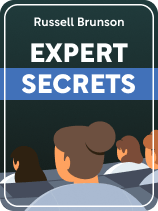

This article is an excerpt from the Shortform book guide to "Expert Secrets" by Russell Brunson. Shortform has the world's best summaries and analyses of books you should be reading.
Like this article? Sign up for a free trial here.
What false beliefs do customers often hold? What’s the best way to address their concerns? When you sell to a large audience, how should you adjust your presentation?
Selling to a big crowd is not the same as selling to an individual or small group. Russell Brunson shares tips on adjusting your techniques in a way that leverages the differences associated with a large audience.
Continue reading to learn Russell Brunson’s “10x secrets.”
Russell Brunson’s 10x Secrets
Brunson notes that, if you’re able to present your frameworks to a large audience—for example, at a live event or through a webinar—you can supercharge your business by selling a high volume at once. He cautions that you must use different strategies when addressing a large crowd. Since you can’t ask questions of your audience as you would when speaking to one person or a small group, you can’t respond to their individual answers, concerns, objections, and so forth.
(Shortform note: While it can be harder to present to a large audience because you can’t respond to individual questions, some experts note that large audiences can have advantages, too. People in large groups feel more anonymous, and so are more likely to sit back and let you present without interrupting—unlike in a smaller group where you might have more trouble staying on course. Large audiences can also have more energy, especially at an event where they’re expecting to have a good time. Ultimately, there are pros and cons to presenting to either audience size, and the important thing is to be prepared with a presentation appropriate for each.)
Russell Brunson’s “10x secrets” will help you succeed in a large gathering. Let’s take a look at these tips.
Tip #1: Focus on Just One Thing
Brunson writes that instead of trying to address all possible reasons your audience should want to use your product, you should focus on just one thing—aim to change just one belief they hold. He argues that if you get them to believe one central idea, all their other objections and concerns will disappear, and they’ll be eager to purchase your product.
The central belief you should focus on is getting them to believe that the only way to be successful in whatever pursuit they choose is to use your product. This is where the uniqueness of your product matters—if you’ve come up with an opportunity different from any existing solutions on the market, you can convince your customers that the only way to success is through you.
(Shortform note: One reason to follow Brunson’s advice to convey just one message is that doing so will help people remember your presentation better. Studies show that people routinely forget the majority of what they hear in presentations within a few days. But by focusing on changing one key belief, you increase the odds that your audience will retain the lesson you taught them since they don’t have other thoughts competing for space in their long-term memory. Further, by highlighting one core belief, you can focus your audience’s emotional attention on it and your message of change, and emotions enhance memory because they convince your brain this message is worth paying attention to.)
Tip #2: Offer Three Secrets
Brunson also advises that you create three “secrets” that address three possible false beliefs that potential customers often hold.
These false beliefs are:
I can’t see how this framework will work. This is when people see a characteristic of your framework they don’t fully understand. For example, they may be unfamiliar with a sales technique (like network marketing) or a product type (like a sales funnel).
My internal obstacles will keep me from using this framework effectively. Sometimes people think they lack a skill or characteristic that the framework requires. For example, they might assume they need to be highly computer literate in order to use your service.
My external obstacles will keep me from using this framework effectively. People might face challenges in their daily lives that they feel will keep them from success. For example, they might be working two jobs and not feel they have spare time, or they don’t think they have logistical access to a certain customer base.
| Fears as a Reflection of Identity Conflicts Ultimately, each of these fears reflects an identity problem: the customer’s belief that their identity doesn’t fit with your product. The things they don’t understand about your idea, such as network marketing or sales funnels, might be things they’ve heard of but associate with other types of people—people they don’t identify with (for example, outgoing or experienced salespeople). Likewise, when people believe their internal or external traits will prevent them from using your product effectively, they’re assuming success can only happen to a different type of person (one who doesn’t face the same pressures they do and thus one they don’t identify with). This problem lies at the core of much of the customer resistance to product purchases because people won’t behave in ways that conflict with their identities, even if they consciously know that changing their behavior will benefit them. Brunson’s efforts to address these fears, then, can be seen as part of his advice to help them envision a new identity for themselves—an identity of someone who can overcome the types of challenges they face. |
Brunson writes that you can address each of these fears by creating a “secret” that highlights the benefits of your product and alludes to how easy it is to overcome these fears. He advises writing each of these secrets as a “how to” statement, such as:
- How to attract new customers in four easy steps
- How to copy your competitor’s playbook in five minutes
- How to get more out of your long-term customers without any more effort
These “secrets” address customers’ fears of not understanding how your framework works, not having the skills to pull it off, and not having the tools to do it effectively.
(Shortform note: Brunson doesn’t detail why he advises using “how to” statements, but psychologists have noted their effectiveness in engaging an audience and encouraging confidence in a task. The simplicity of the statements makes it feel as if the underlying principle is easy to learn, and the simpler you can make your product seem, the more success you’ll have in selling it—people instinctively shy away from complexity because it threatens us with uncertainty. This is why short, simple messages that can be boiled down to a single sentence or slogan (like the “secrets” above) best hold customers’ attention.)
Tip #3: Close Strong
Brunson writes that, when your presentation is over, your audience will only remember the last thing you’ve shown them. This means that, if you outline your product’s elements one by one, they’ll remember only the last one you discuss. Often this one element is not compelling enough to get them to make a purchase.
Instead, Brunson advises that as you review your product’s elements, you add them one by one to the same slide so that at the end of your presentation, the last slide you show the audience lists the full collection of the offer’s elements. Then, add up the value of each of those elements and post it so they can see the complete value of what they’d receive by purchasing your product.
In this way, your audience will be left with a feeling that your offer is a great value with a lot of parts to it, and they’ll be far more likely to buy it. Brunson writes that once he used this technique instead of closing his presentation with more traditional sales techniques, his sales skyrocketed.
(Shortform note: The traditional sales techniques Brunson refers to typically include ending with a call-to-action (a request that they take the next step, whether that’s purchasing your product, signing up for your newsletter, attending another event, and so on), a memorable quote, a case study or anecdote, or a visual image (such as a running timer, to emphasize a deadline). Brunson’s strategy implies that ending on any of these notes will separate your customer’s attention from the elements of your presentation that matter most. Thus, while these endings might result in a pleasant feeling of closure or an enjoyable speech, they won’t spur sales, which is, as Brunson emphasizes, the ultimate goal of your sales presentation.)

———End of Preview———
Like what you just read? Read the rest of the world's best book summary and analysis of Russell Brunson's "Expert Secrets" at Shortform.
Here's what you'll find in our full Expert Secrets summary:
- A how-to guide for creating excitement about your business ideas
- How to tap into your audience’s emotions to create loyal customers
- Tips for identifying and targeting your core market






